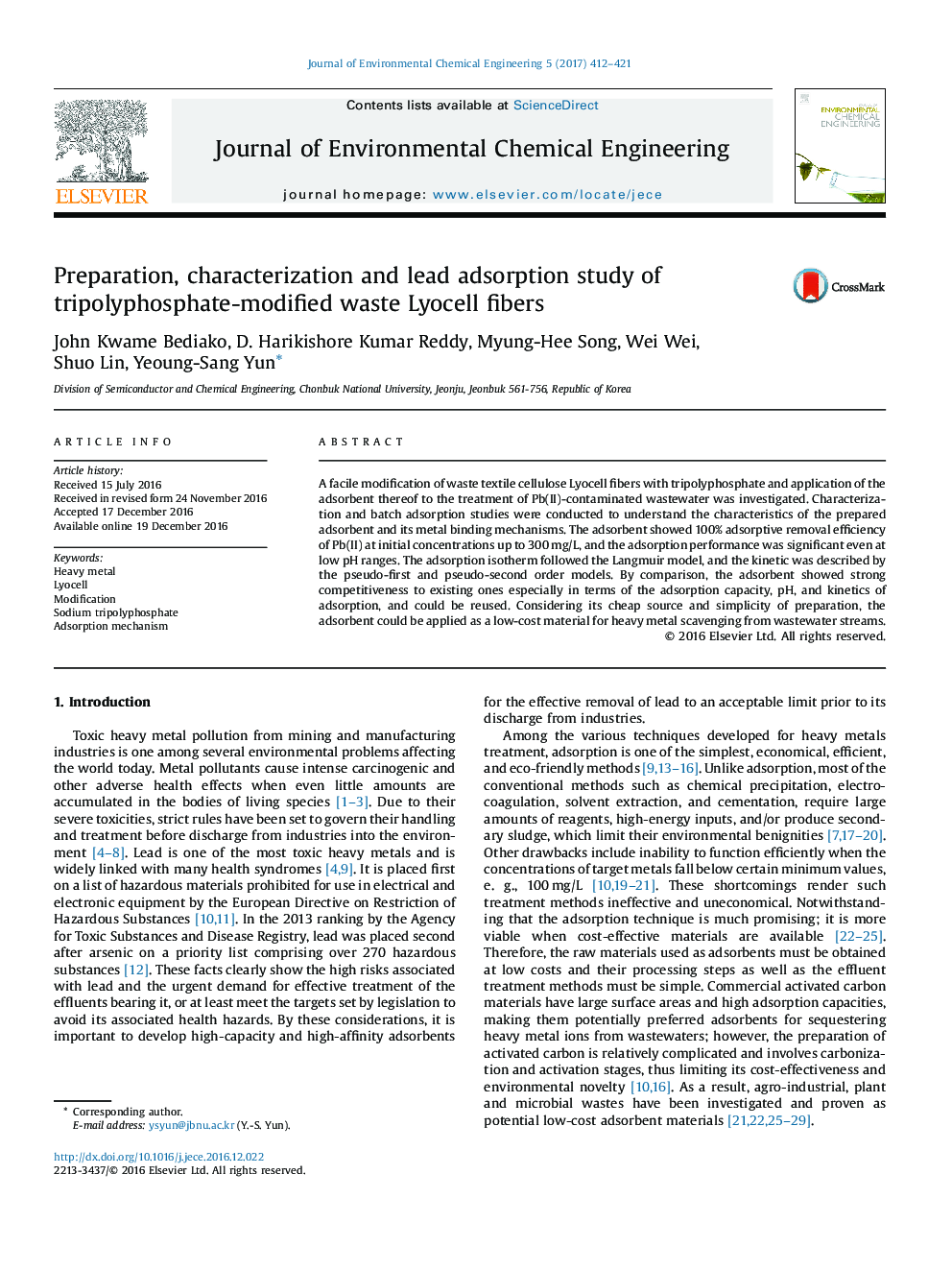| کد مقاله | کد نشریه | سال انتشار | مقاله انگلیسی | نسخه تمام متن |
|---|---|---|---|---|
| 6477374 | 1362584 | 2017 | 10 صفحه PDF | دانلود رایگان |
- A facile method for preparing cellulosic heavy metal adsorbent with phosphate chelating groups was presented.
- High selectivity of Pb(II) was found in multi-metal systems.
- Hundred percent adsorption efficiency of Pb(II) at initial concentrations up to 300Â mg/L was achieved.
- Adsorption capacity was very high even at low pH.
A facile modification of waste textile cellulose Lyocell fibers with tripolyphosphate and application of the adsorbent thereof to the treatment of Pb(II)-contaminated wastewater was investigated. Characterization and batch adsorption studies were conducted to understand the characteristics of the prepared adsorbent and its metal binding mechanisms. The adsorbent showed 100% adsorptive removal efficiency of Pb(II) at initial concentrations up to 300Â mg/L, and the adsorption performance was significant even at low pH ranges. The adsorption isotherm followed the Langmuir model, and the kinetic was described by the pseudo-first and pseudo-second order models. By comparison, the adsorbent showed strong competitiveness to existing ones especially in terms of the adsorption capacity, pH, and kinetics of adsorption, and could be reused. Considering its cheap source and simplicity of preparation, the adsorbent could be applied as a low-cost material for heavy metal scavenging from wastewater streams.
119
Journal: Journal of Environmental Chemical Engineering - Volume 5, Issue 1, February 2017, Pages 412-421
